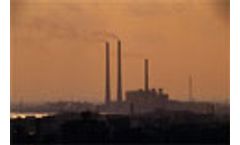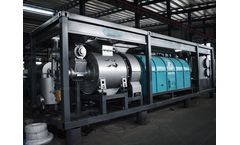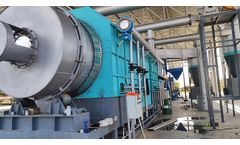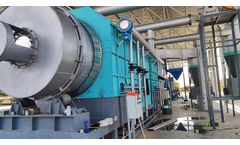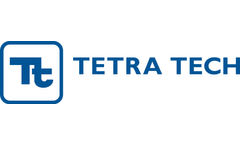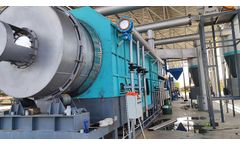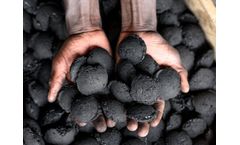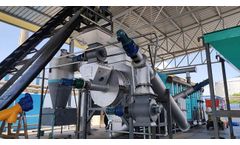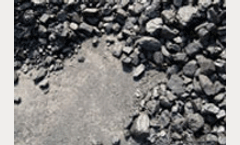carbon sequestration News
-
The economic benefits of carbon storage in the Mediterranean Sea
Carbon storage in the Mediterranean Sea could be worth up to €1722 million a year, a new study has found. The researchers performed a combined ecologicaleconomic assessment, finding that the sea takes up an estimated 17.8 million tonnes of CO2 every year, providing important climate change mitigation. Marine ecosystems are essential for human life. They provide a host of ecosystem services ...
-
Aid needed to help China make carbon cuts
International carbon funds should be aggressively directed towards helping China avoid the use of carbon-rich technologies, say Ning Zeng and colleagues in this Science article. Action is needed despite significant gains in energy efficiency, they note, because based on current economic growth rates and levels of carbon intensity (emissions per unit of gross domestic product) China's emissions ...
-
Trees near homes boost incomes, sequester carbon
A form of small-holder agroforestry in which trees are planted around the home, maximising the land left available for cash crops, may prove the best balance between sequestering carbon and making money by farming other crops, a study has found. There has been a proliferation of projects that encourage small-scale farmers to adopt tree planting as part of efforts to sequester carbon from the ...
By SciDev.Net
-
Revolutionizing Carbon Sequestration: The Role of Biochar Machine
The emergence of biochar machines has brought new dimensions to sustainable environmental practices. In this article, we explore the pivotal role of biochar machines in carbon removal and their impact on the evolving Carbon Removal Certification Mechanism. Biochar Machine and Carbon Removal The Role of Biochar in Carbon Sequestration Biochar, a carbon-rich product obtained from the pyrolysis of ...
-
Biochar: Cultivating Carbon Solutions for a Greener Tomorrow
Introduction: Against the backdrop of the COP28 United Nations Climate Change Conference in Dubai, we witness the European Union actively advocating global climate action. At this critical moment in the global climate crisis, the biochar production project emerges as a topic of significant interest. As a sustainable carbon sequestration solution, biochar demonstrates its potential value in ...
-
DOE publishes best practices manual for public outreach and education for carbon storage projects
The U.S. Department of Energy’s Regional Carbon Sequestration Partnerships program has released a new manual to recommend best practices for public outreach and education for carbon dioxide (CO2) storage projects. The recommendations are based on lessons learned by the Department’s seven Regional Carbon Sequestration Partnerships during the first six years of the partnerships program. The new ...
-
Biomass Pyrolysis: Transforming Carbon Credits with Sustainable Solutions
Carbon credit trading has become a pivotal strategy in mitigating climate change by incentivizing businesses and industries to reduce their greenhouse gas emissions. Biomass pyrolysis plants have emerged as crucial players in this ecosystem. This article explores the significant role played by biomass pyrolysis plants in carbon credit trading platforms. Biomass Pyrolysis Process Pyrolysis as a ...
-
Harnessing the Power of Sustainability with a Biochar Making Machine
Introduction Biochar, a type of charcoal produced from organic materials, is gaining popularity for its numerous environmental and agricultural benefits. One of the key tools in biochar production is the biochar making machine. In this article, we'll explore how a biochar making machine works and the sustainable advantages it offers. The Biochar Making Process A biochar making machine utilizes ...
-
Montana Governor Signs Clean Energy Bills
HELENA, Montana (ENS) – Montana Governor Brian Schweitzer Tuesday signed into law two bills that provide tax incentives for future development and transmission of clean and renewable energy. The incentives support the development of new transmission lines, carbon dioxide sequestration pipelines to prevent emission of this greenhouse gas into the atmosphere, liquid fuel pipelines, power plants, ...
-
Regional partner announces plans for carbon storage project using CO2 captured from coal-fired power plant
Southern Company and the Southeast Regional Carbon Sequestration Partnership (SECARB), one of seven members of the U.S. Department of Energy (DOE) Regional Carbon Sequestration Partnerships program, have announced plans to store carbon dioxide (CO2) captured from an existing coal-fired power plant. The project represents a major step toward demonstrating the viability of integrating carbon ...
-
Carbon sinks losing the battle with rising emissions
“Forests, grasslands and oceans are absorbing carbon dioxide (CO2) from the atmosphere faster than ever but they are not keeping pace with rapidly rising emissions,” says CSIRO scientist and co-Chair of the Global Carbon Project, Dr Mike Raupach. “While these natural CO2 sinks are a huge buffer against climate change, which would occur about twice as fast without them, they cannot be taken for ...
-
Carbon payments `could help enrich African soil`
Paying farmers in Sub-Saharan Africa to sequester carbon may provide a stronger incentive to improve soil quality than simply offering official fertiliser subsidies, a modelling study has found. In recent years, fertiliser subsidies have been vigorously promoted to farmers in countries like Ghana, Kenya, Malawi, Tanzania and Zambia. But despite widespread levels of soil degradation, take-up ...
By SciDev.Net
-
Tetra Tech wins $400 million multiple-award USAID clean energy contract for critical priority countries
Tetra Tech, Inc. (NASDAQ: TTEK) announced today it has been awarded a $400 million contract to provide technical assistance for the U.S. Agency for International Development (USAID) clean energy program development in critical priority countries. The countries specified are Afghanistan, Iraq, Pakistan, South Sudan and Yemen, but others could be added later. Five companies, including two small ...
By Tetra Tech
-
C3.ai Digital Transformation Institute Announces AI for Energy and Climate Security Grantees
C3.ai Digital Transformation Institute (C3.ai DTI) recently announced the second round of C3.ai DTI awards, focused on using artificial intelligence (AI) techniques and digital transformation to advance energy efficiency and lead the way to a lower-carbon, higher-efficiency economy that will ensure energy and climate security. C3.ai DTI issued this call for proposals in February 2021, and ...
-
The Role of Straw Charcoal Production in Advancing Sustainable Agriculture
Introduction The Vital Role of Agriculture Agriculture is the backbone of our global food supply. It sustains billions of people and contributes significantly to economies worldwide. However, this essential sector faces unprecedented challenges in the 21st century. Sustainable Agriculture and Its Challenges Sustainable agriculture, with its focus on environmentally friendly practices, resource ...
-
Waste Biomass Resource Solution: Biochar Production
Introduction: Waste biomass, a multifaceted challenge in today's world, encompasses a spectrum of organic materials requiring efficient management. This article delves into the promising realm of biochar production as a sustainable solution, exploring its potential to transform biomass waste into a valuable resource. Definition of Waste Biomass: Waste biomass comprises organic materials derived ...
-
Wood Charcoal Making Machine - Good Choice for Waste Biomass Management
In a world grappling with mounting waste biomass challenges and striving for sustainable solutions, the wood charcoal making machine emerges as a beacon of innovation. Waste biomass, stemming from diverse sources, poses a significant environmental concern if left unmanaged. However, with the integration of advanced technology, the conversion of waste biomass into valuable charcoal is not only a ...
-
Figuring out where to put the carbon
To meet our immediate energy needs without exacerbating climate change, most experts agree, we’ll need to find a way to store the carbon dioxide given off by the combustion of coal, oil and natural gas. But no full-scale storage systems exist, and the plans to create them have many unknowns. New projects at MIT could help to fill that information gap. At the American Geophysical Union’s fall ...
-
Saharan dust enhances carbon trapping by ocean deserts
A new study led by the National Oceanography Centre (NOC) reveals that that dust generated by land erosion has large repercussions for oceanic processes and planetary climate. Wind-driven Saharan dust to the remote Atlantic Ocean not only provides phytoplankton with essential nutrients to promote their growth, but the dust particles themselves are ballasting these carbon-rich microscopic plants, ...
-
FutureGen clean-coal project to be shut down after feds withdraw $1B in funding
Coal companies working with the government on the long-planned $1.65 billion FutureGen clean-coal project said Tuesday they have no choice but to shut it down after the Department of Energy suspended the majority of its funding. The department confirmed that it will not provide the $1 billion in stimulus funding it had committed to the project, which aimed to refit a coal-fired power plant near ...
Need help finding the right suppliers? Try XPRT Sourcing. Let the XPRTs do the work for you
